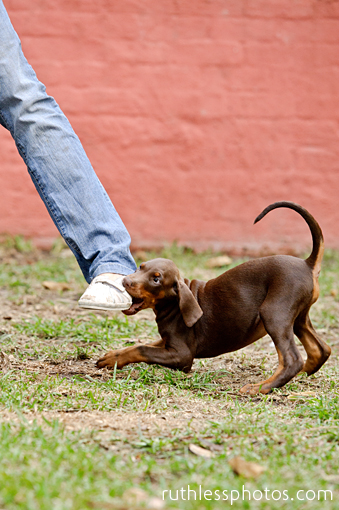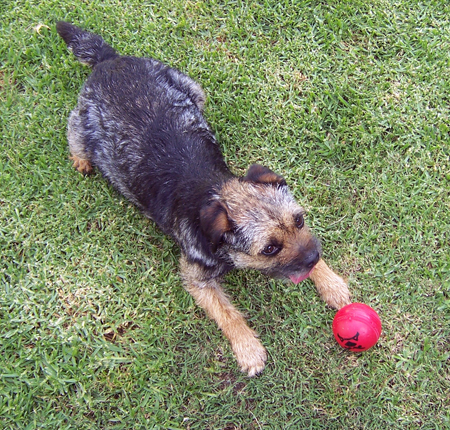Open Paw (a Dunbar project)
This post is part of the series in response to Dunbar’s 2012 Australian seminars. See index.
Have you heard about Open Paw? It’s a shelter program designed to make pets happier in shelter environments, and improve their chances of finding a new home.
Along with the minimal health guidelines, kennel dogs need to meet 3 unfamiliar people a day.
 They advocate a classical conditioning approach of just ‘throwing treats’ at the dogs as you walk past, irrelevant to the behaviour. Some have concerns that this rewards barking behaviour but, in reality, the dog often has a pause between barking behaviour and acknowledging the reward, and it’s more likely the dog will associate his quietness with the treat. (Dog can’t sniff a treat and woof at the same time!)
They advocate a classical conditioning approach of just ‘throwing treats’ at the dogs as you walk past, irrelevant to the behaviour. Some have concerns that this rewards barking behaviour but, in reality, the dog often has a pause between barking behaviour and acknowledging the reward, and it’s more likely the dog will associate his quietness with the treat. (Dog can’t sniff a treat and woof at the same time!)
The aim is to produce a quiet and pleasant environment in shelters, which people enjoy visiting. The program also seeks to produce dogs that are ‘automatically’ well behaved (from all or none training) and more likely to stay in their new home.
If you’d like to learn more about Open Paw, the AnimalCAFE podcast may be entertaining for you.




